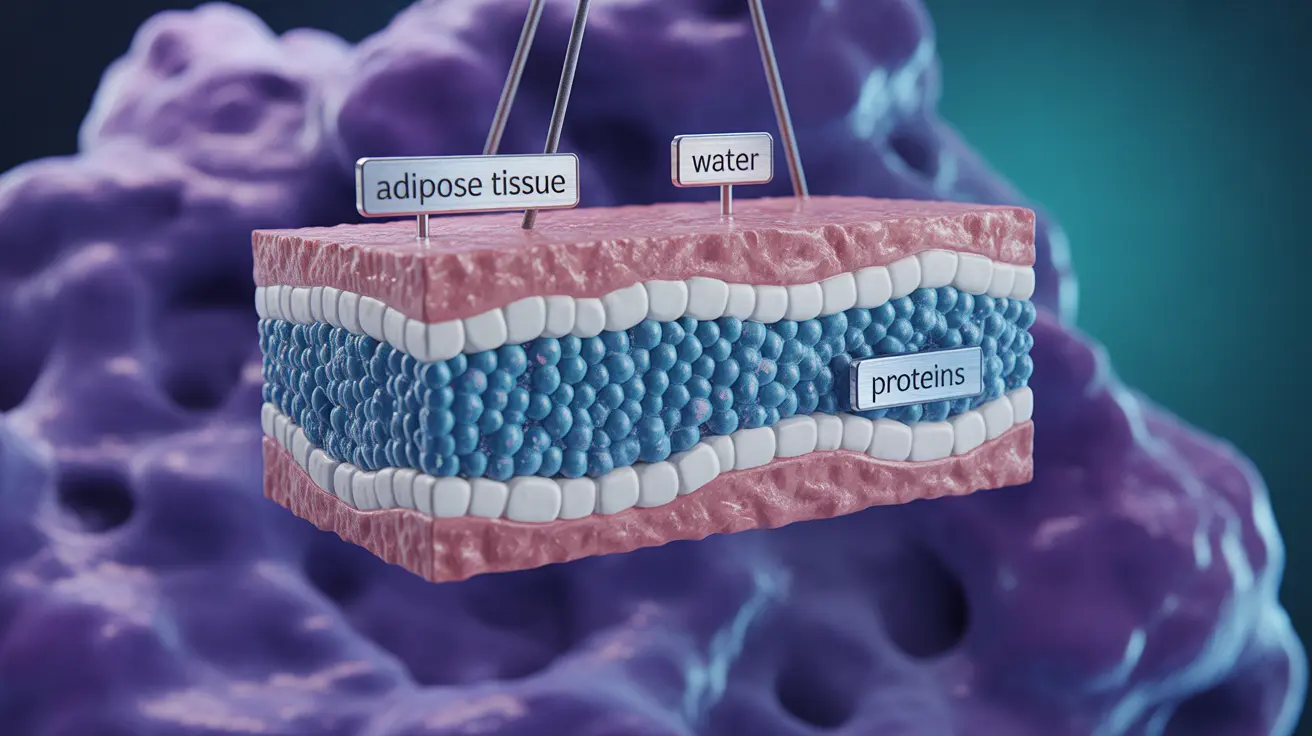Understanding the relationship between calories and body fat is crucial for anyone interested in weight management. While many people are familiar with the often-quoted "3,500 calories per pound of fat" rule, the reality is more complex and nuanced than this simple calculation suggests.
Let's explore the science behind calories in body fat, examine common misconceptions, and understand why weight loss isn't always as straightforward as basic math might suggest.
The Science Behind Calories in Body Fat
Pure body fat contains approximately 3,500 calories per pound. However, this number represents only the energy content of fat tissue itself, not accounting for the water, proteins, and other components that make up actual body fat as it exists in your body.
When we talk about "burning a pound of fat," we're really discussing a more complex biological process that involves various types of tissue and metabolic factors.
Understanding Body Fat Composition
Body fat isn't just pure fat - it's made up of:
- Adipose tissue (87%)
- Water (12%)
- Cellular proteins and minerals (1%)
This composition means that when you lose a pound of body fat, you're not just losing pure fat calories, but a mixture of these components.
The Reality of Calorie Deficits and Weight Loss
The traditional advice of creating a 500-calorie daily deficit to lose one pound per week is based on the 3,500-calorie rule. However, this oversimplified approach doesn't account for several important factors that influence weight loss.
Metabolic Adaptation
As you reduce calorie intake, your body responds by:
- Decreasing resting metabolic rate
- Reducing non-exercise activity thermogenesis (NEAT)
- Increasing hunger hormones
- Decreasing satiety hormones
These adaptations mean that the same calorie deficit won't continue to produce the same results over time.
Individual Variations in Weight Loss
Several factors affect how many calories you need to cut to lose weight:
- Starting weight and body composition
- Activity level and exercise intensity
- Hormonal balance
- Age and gender
- Sleep quality
- Stress levels
Frequently Asked Questions
How many calories are there really in a pound of body fat?
While pure fat contains about 3,500 calories per pound, actual body fat tissue contains approximately 3,500 calories plus water, proteins, and minerals. This makes the real-world calorie content slightly different from the commonly quoted number.
Is the 3,500-calorie rule for losing one pound per week accurate?
The 3,500-calorie rule is an oversimplification. While it can be a useful starting point, actual weight loss is more complex due to metabolic adaptation, body composition changes, and individual variations in metabolism.
Why does weight loss slow down even if I keep cutting 500 calories a day?
Weight loss slows down because your body adapts to reduced calorie intake by lowering its metabolic rate and becoming more efficient at using energy. This metabolic adaptation means you may need to adjust your strategy over time to continue seeing results.
How does metabolic adaptation affect the number of calories I need to lose weight?
Metabolic adaptation means your body requires fewer calories to maintain its weight as you lose pounds. This means you may need to periodically adjust your calorie deficit or increase physical activity to continue losing weight.
What factors influence how many calories I need to cut to lose one pound?
Multiple factors affect the calorie deficit needed for weight loss, including your current weight, muscle mass, activity level, age, gender, hormones, sleep quality, and stress levels. These variables make weight loss a highly individual process that may require personalized adjustments.




